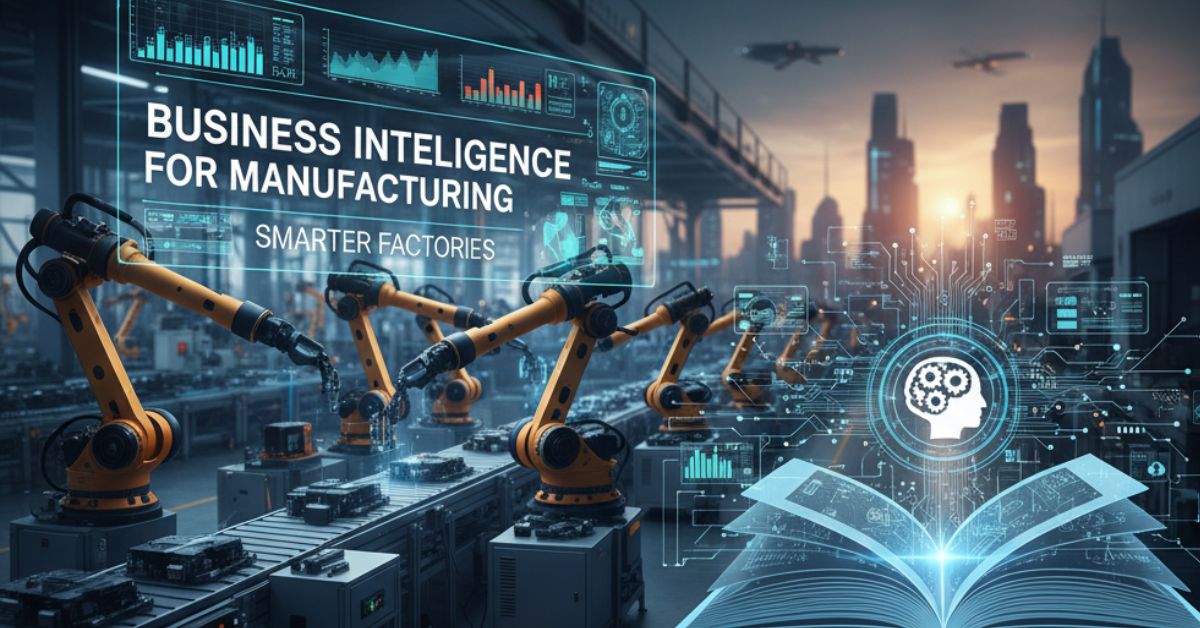Do you ever feel like your factory is full of secrets? Machines hum, data flows, but the answers to big questions seem just out of reach. What if you could understand exactly what your equipment is telling you?
You can. The key is called Business Intelligence, or BI.
Think of BI as a super-powered translator for your factory. It takes all the numbers and data from your machines and turns them into simple pictures and reports. These reports help you make smarter choices, save money, and build better products .
This guide will break down Business Intelligence in simple terms. You will learn what it is, why it matters, and how it can help your manufacturing business grow stronger.
What is Manufacturing Business Intelligence?
So, what exactly is Business Intelligence for a manufacturer?
In simple terms, BI is a set of tools and processes that help you understand your data. It gathers information from all over your factory—from assembly lines to your sales team—and puts it all in one place.
This process has a few key steps :
- Data Collection: It pulls numbers from your machines, your orders, and your quality checks.
- Data Integration: It mixes all this different information together to find connections.
- Analysis: It looks for patterns, like why a machine often breaks down.
- Visualization: It shows you these patterns in easy-to-read dashboards with charts and graphs.
This means you don’t need to be a data scientist. BI gives you a clear picture of your entire operation, so you can stop guessing and start knowing.
Why BI is a Game-Changer for Your Factory
Using BI is like turning on the lights in a dark room. You suddenly see everything clearly. Here’s how that clarity helps you win:
- Spot Problems Before They Happen: BI can warn you when a machine is likely to break. This lets you fix it during planned downtime, which is much cheaper than a sudden, unexpected halt . This is called predictive maintenance.
- Improve Your Product Quality: By analyzing data from your production line, BI can find the root cause of defects. You can then fix the process, reduce waste, and make your quality control much stronger.
- Never Run Out of Parts (or Have Too Many): BI helps you predict exactly how much raw material you need. This means you won’t have to stop production because you’re waiting for a part. It also means you won’t waste money storing too much extra inventory .
- Make Smarter Decisions, Faster: Instead of relying on a “gut feeling,” you can use real data. BI dashboards show you what’s happening right now, helping you make confident choices about everything from schedules to budgets .
BI in Action: Real-World Examples
Let’s make this even more concrete. How is BI actually used on the factory floor?
- Predicting Machine Failures: Imagine a sensor on a critical machine notices it’s getting too hot. Your BI system catches this trend and alerts your maintenance team. They service the machine over the weekend, avoiding a breakdown on Monday morning.
- Creating the Perfect Production Schedule: Your BI tool can analyze data on how long each job takes, which employees are available, and what materials are in stock. It then helps you build a schedule that gets more done with less waiting.
- Checking Your Suppliers’ Performance: Are your suppliers delivering on time? A BI dashboard can track their performance for you. You’ll see which suppliers are reliable and which might be causing delays in your production.
How to Start Using BI in 5 Simple Steps
Getting started with BI doesn’t have to be scary. You can begin small and grow from there.
- Know Your Goal: What problem do you want to solve? Do you want to reduce machine downtime? Improve quality? Start with one clear goal.
- Pick the Right Tools: Choose a BI platform that works with the systems you already have, like your ERP software. It should be easy for your team to use .
- Trust Your Data: You need good, clean data. Work with your team to identify where your data comes from and make sure it’s accurate.
- Start with a Small Win: Don’t try to fix everything at once. Pick one machine or one production line for your first BI project. A quick success will build confidence.
- Get Your Team on Board: Teach your team how to use the new BI tools. Show them how it makes their jobs easier, not harder. A data-driven culture is a successful culture .
The Future of BI in Manufacturing
BI is only getting smarter. Soon, it will be even more powerful thanks to Artificial Intelligence (AI) . This means your systems will not only tell you what is happening but will also suggest what you should do next.
Furthermore, as one source notes, industrial enterprises are generating incredible amounts of data . Having a strong BI system will be the only way to make sense of it all and stay ahead of the competition.
Ready to Unlock Your Factory’s Potential?
You don’t have to be data-rich and insight-poor anymore. Business Intelligence is the key to unlocking the full potential of your manufacturing operations. It helps you work smarter, not just harder.
The goal of BI is to give you the clarity you need to reduce costs, improve quality, and drive your business forward. It’s no longer a luxury for the biggest companies; it’s a necessity for any manufacturer who wants to compete and win.











